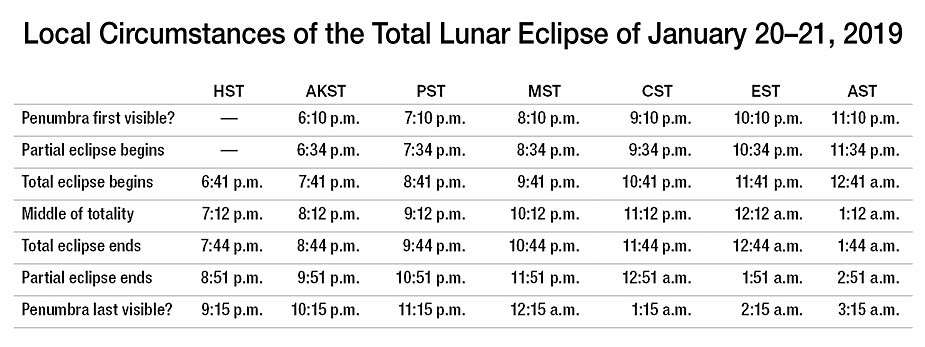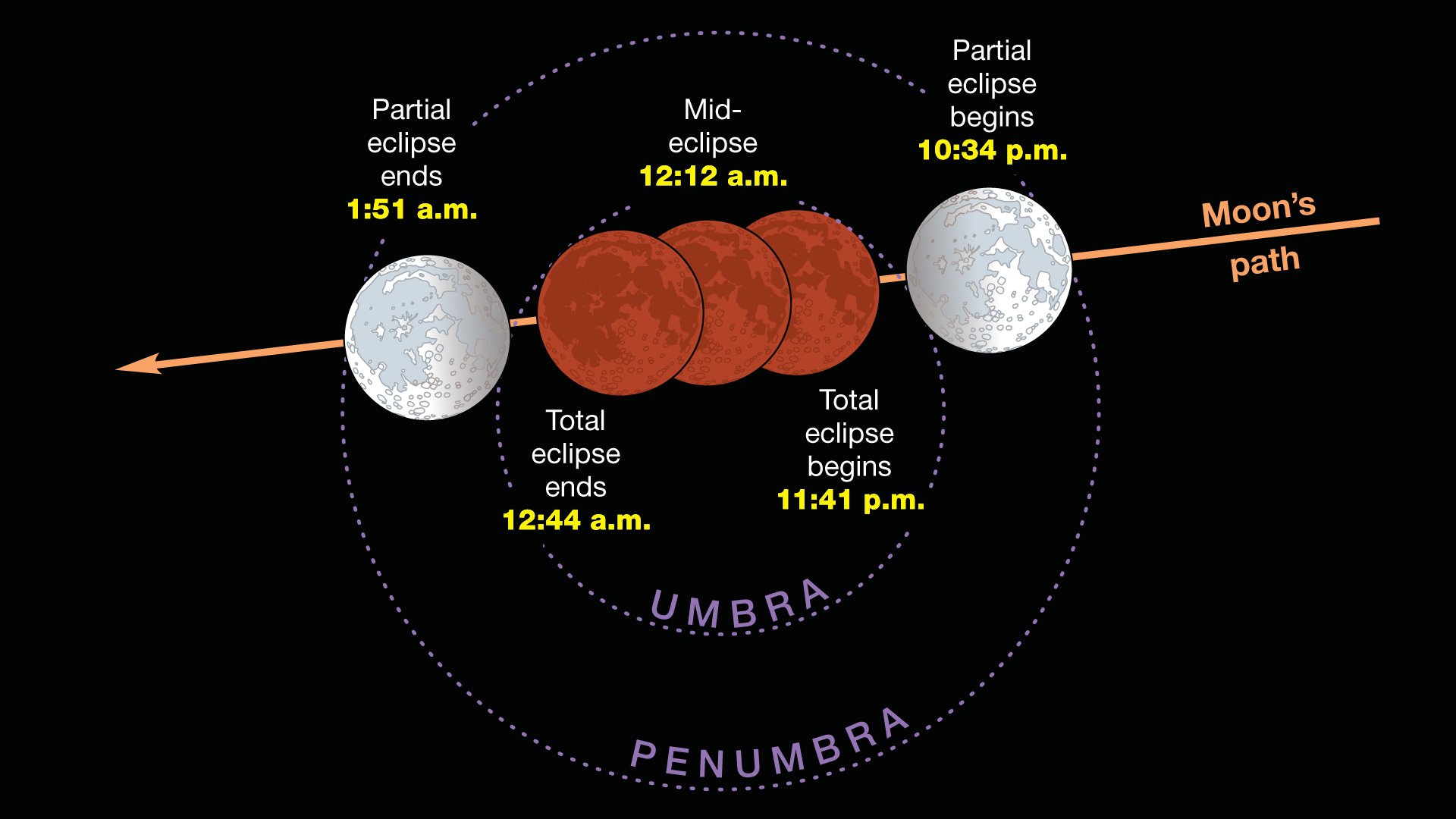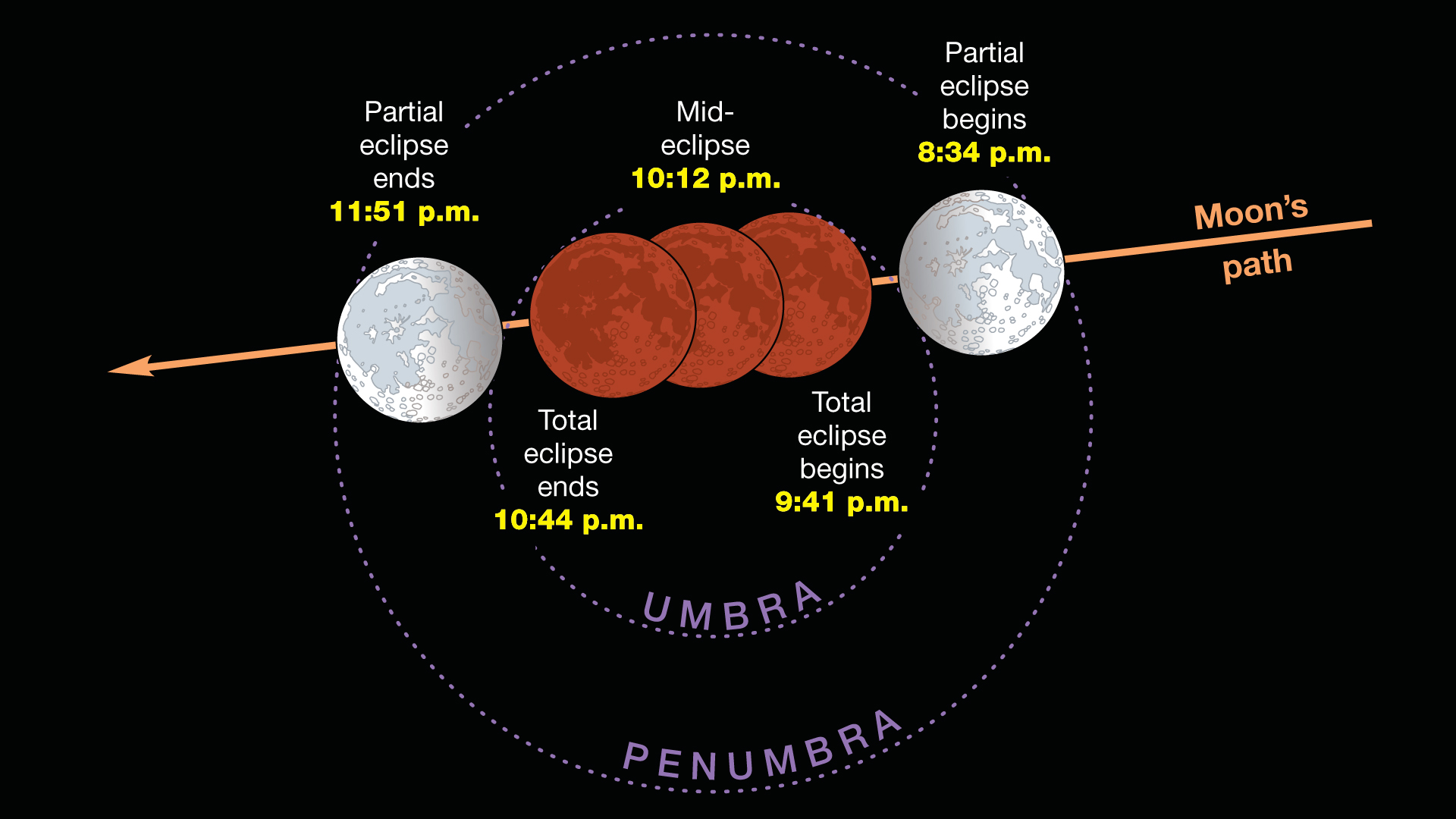Amazing Photos of the Super Blood Wolf Moon of 2019!
A "Super" Blood Moon
Although the lunar eclipse of Jan. 20-21, 2019 coincided with a supermoon — when the moon appears larger due to its proximity to Earth — this photo of the “blood moon” shows the moon looking rather modest in size as it glows deep-red against a backdrop of stars.
Super Blood Wolf Moon Eclipse Over Manhattan
Alexander Krivenyshev of WorldTimeZone.com took this shot of the total lunar eclipse over Manhattan from Guttenberg, New Jersey, on the night of Jan. 20, 2019.
Total Lunar Eclipse 2019 Visibility Map
This Sky & Telescope map shows the visibility region for the total lunar eclipse of Jan. 20-21, 2019. Weather permitting, the eclipse will be visible across much of the Western Hemisphere, including the Americas for totality, while partial eclipses are visible further out. This is the last total lunar eclipse until 2021.
Time Zone Schedule for Blood Moon 2019
The times of major events during the total lunar eclipse of Jan. 20-21, 2019 are listed according to time zone in this chart for North America compiled by Sky & Telescope magazine.
Eclipse Stages Times in EST
The major stages of the total lunar eclipse of Jan. 20-21, 2019 are shown in this Sky & Telescope graphic. Times are listed in EST.
Eclipse Stages Times in CST
This chart lists the times of the Blood Moon eclipse on Jan. 20, 2019 in Central Standard Time.
Eclipse Stages Times in MST
Here are the times of the Blood Moon 2019 stages in Mountain Standard Time.
Breaking space news, the latest updates on rocket launches, skywatching events and more!
Eclipse Stages Times in PST
Here are the times of the Blood Moon 2019 stages in Pacific Standard Time.
Total Eclipse of the Moon (Infographic)
What makes the moon turn dark and red? Find out in the full SPACE.com infographic here.
Measuring a Total Lunar Eclipse
From Sky & Telescope: Astronomers use this five-step "Danjon scale" to judge the darkness of the Moon during a total lunar eclipse.

Hanneke Weitering is a multimedia journalist in the Pacific Northwest reporting on the future of aviation at FutureFlight.aero and Aviation International News and was previously the Editor for Spaceflight and Astronomy news here at Space.com. As an editor with over 10 years of experience in science journalism she has previously written for Scholastic Classroom Magazines, MedPage Today and The Joint Institute for Computational Sciences at Oak Ridge National Laboratory. After studying physics at the University of Tennessee in her hometown of Knoxville, she earned her graduate degree in Science, Health and Environmental Reporting (SHERP) from New York University. Hanneke joined the Space.com team in 2016 as a staff writer and producer, covering topics including spaceflight and astronomy. She currently lives in Seattle, home of the Space Needle, with her cat and two snakes. In her spare time, Hanneke enjoys exploring the Rocky Mountains, basking in nature and looking for dark skies to gaze at the cosmos.










